Make healthy baby oatmeal at home in less than 5 minutes and learn how to add flavor and nutrition easily with this super simple method. This is a great baby food that can change and evolve with baby. It’s nutritious, affordable, and often tastier than store-bought baby cereal!
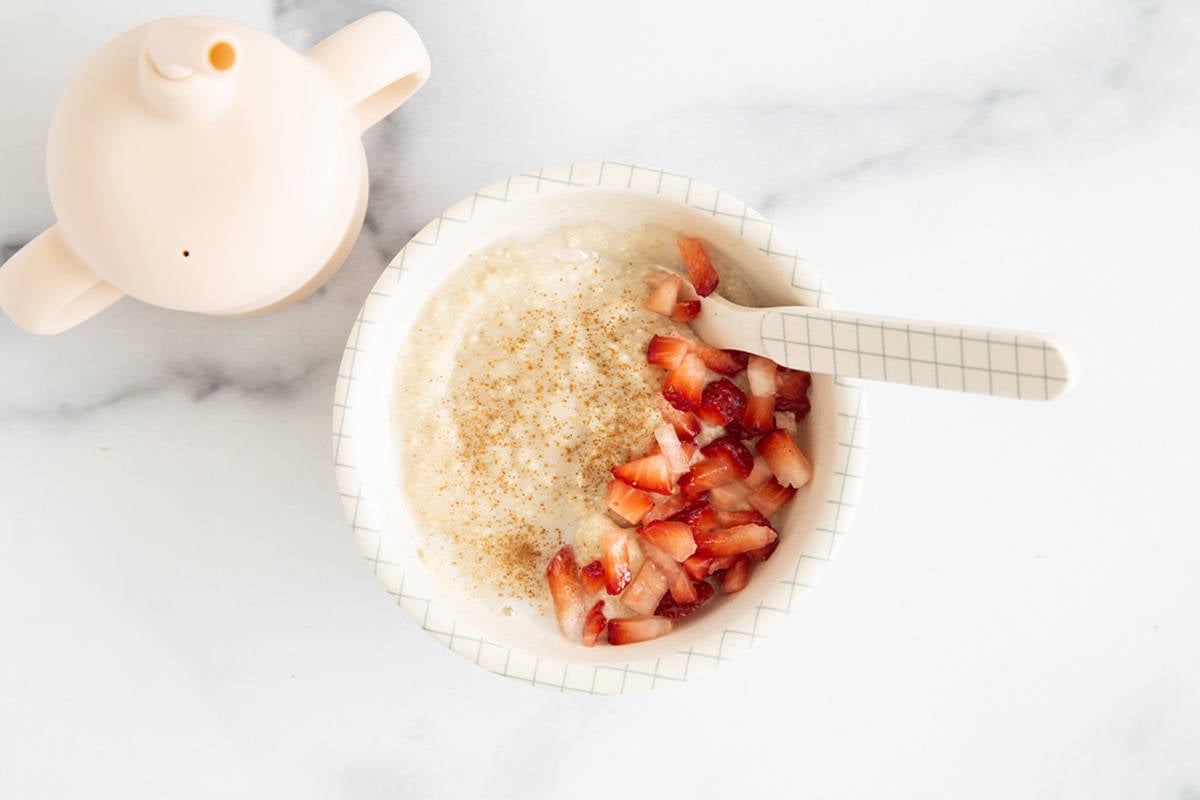
Baby Oatmeal
Oatmeal has been a staple in our house even before I had kids, and I was so glad to learn that turning it into a version of baby oatmeal is crazy easy. Yes, you can buy baby oatmeal, but I find that it usually smells (and tastes) a little funny, and it can be expensive.
This version of baby oatmeal, which is so easy to make and actually tastes like oatmeal, is a great homemade baby food option. My kids loved this when they were new eaters as an easy baby breakfast idea.
I love this as a nutritious, whole grain breakfast. And it’s a quick meal for any other time of day. It’s almost as fast to make as baby cereal from the store but has a much better flavor. It’s easy to make the base to keep on hand in the pantry, then mix it up whenever baby is ready for a quick meal for baby.
(You may also like Quinoa Baby Cereal, Baby Rice Cereal, Baby Omelette, Baby Muffins, and more recipes with oatmeal.)
Table of Contents
Your toddler won’t eat? Help is here!
Sign up for our email updates to get tips and ideas sent to your inbox.
Ingredients You Need
To make this recipe, you’ll need to have the following ingredients on hand and ready to go.
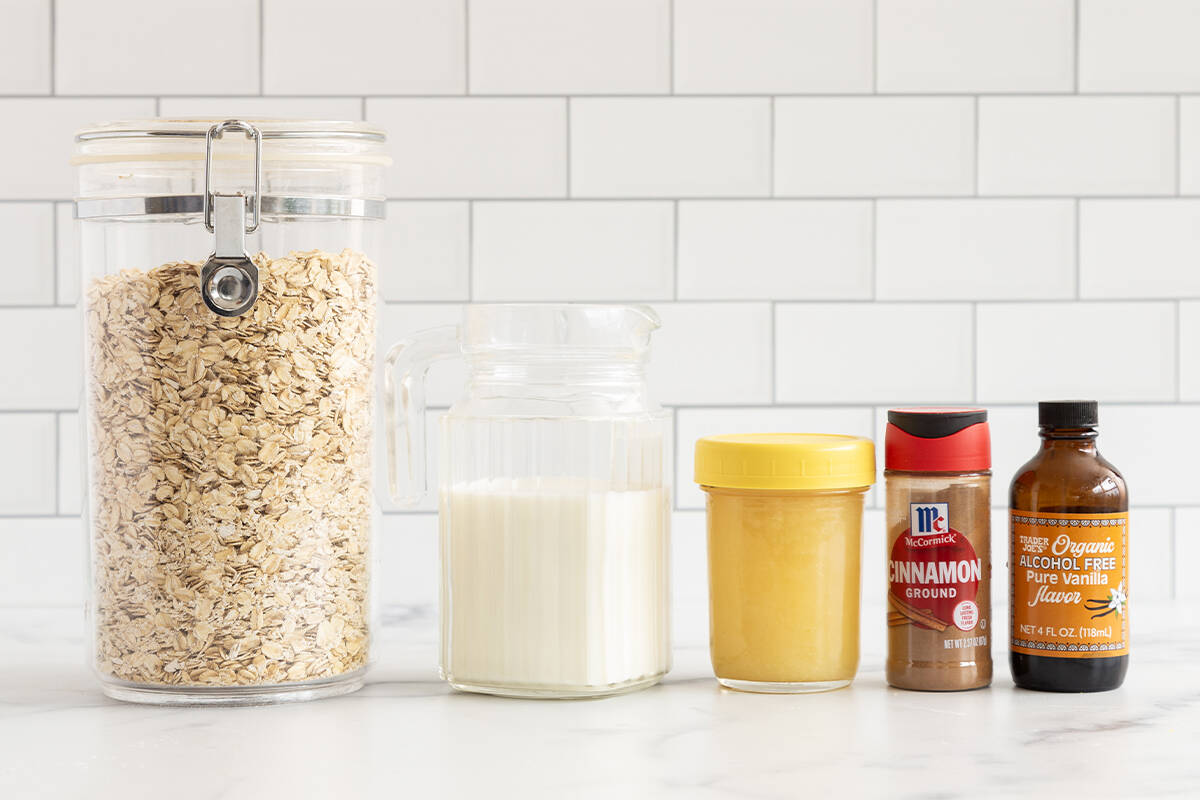
- Old-fashioned rolled oats: This form of oatmeal is easy to find at the store and keep on hand in the pantry. You can choose organic oatmeal if you prefer. You can also start with instant oats or even steel-cut oats if you have a high-powered blender to grind them up.
- Liquid: Such as water, breastmilk, formula, or unsweetened nondairy milk.
- Spices: Cinnamon, cardamom, or other warm spices can be added, optionally, for more flavor.
- Puree: You can add a fruit or veggie puree, or mashed fruit such as banana, to flavor to the oatmeal.
- Other add-ins: You can mix in other add-ins for flavor, nutrition, or allergen exposures such as nut butter, chia seeds, hemp seeds, or flaxseeds.
Step-by-Step Instructions
Here’s a look at the easy process of making this DIY baby cereal recipe. Scroll down to the bottom of the post for the full information, including the amounts and timing.
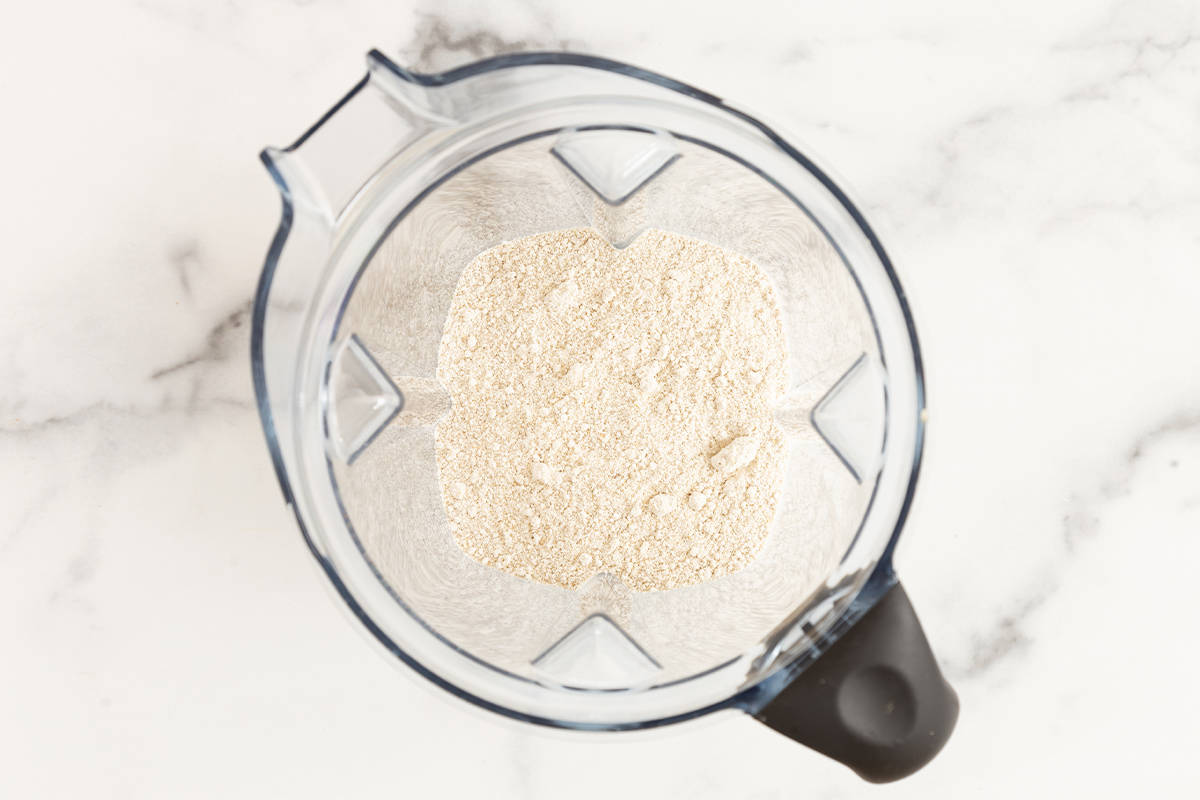
- Add the oats to a blender. Grind, starting on low and working up to high, until the oats form a fine powder-like flour, which is the base of the oatmeal cereal.
- Add some ground-up oats to a heat-safe bowl.
- Add a little hot water and stir. Add more to thin to desired consistency depending on baby—thinner for newer eaters and a little thicker as they become more comfortable with texture.
- Stir in optional flavorings and nutrients.
TIP: You can start off making this thinner as a Stage 1 baby food, then gradually add less water to make a thicker Stage 2 baby food.
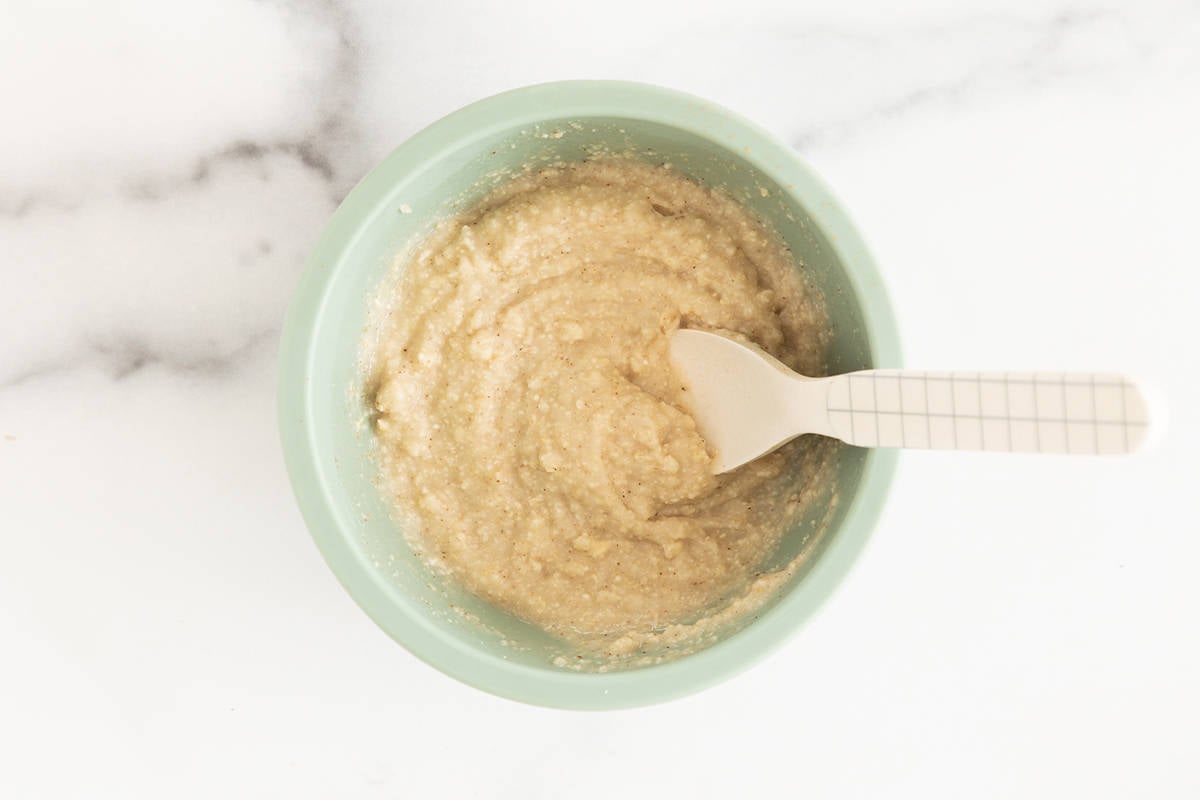
Serving Suggestions
You can offer a small amount on a baby spoon, then stop offering it when baby closes their mouth or turns their head, as those are signs baby is done. Or you can put a little on a spoon and hand the spoon to baby to feed themself.
Baby Cereal for Baby-Led Weaning
You can serve this to a baby, whether you’re starting with purees or doing the baby-led weaning style of feeding. With the latter, simply put some of the cereal onto a spoon and hand the spoon to baby to self-feed. Repeat the process until baby shows signs of being done, such as turning her head or closing her mouth to the spoon.
(My favorite baby and toddler spoons can help with making sure this method is easy, too.)
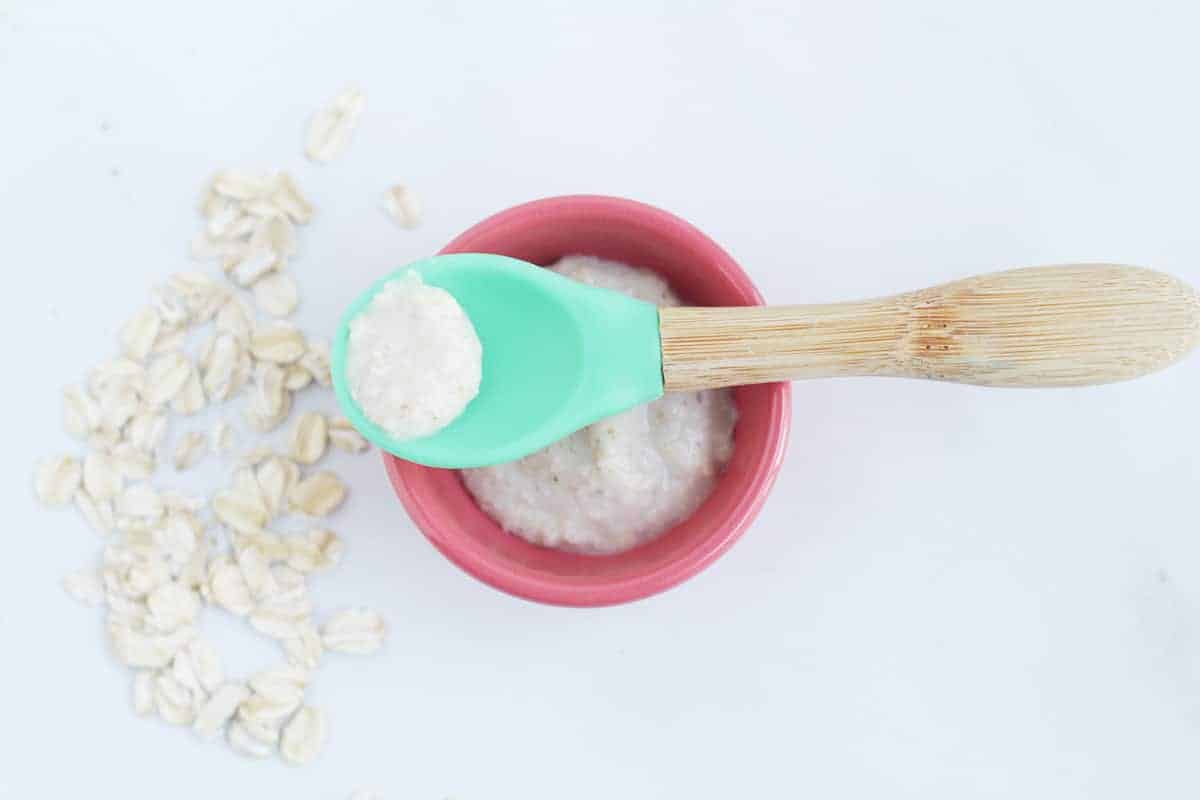
Optional Flavorings to Add to Baby Oatmeal
Here are some ideas for what you can stir into baby oatmeal to make it more flavorful and nutritious for baby. Babies need healthy fats and iron, and to be exposed to a range of flavors, so these are some great options to work into the mix.
Add about 1-2 tablespoons of each puree and 1/2-1 teaspoon of the flaxseed to each serving of oatmeal.
- Banana Puree
- Peach Puree
- Mango Puree
- Avocado Puree
- Apple Puree
- Peanut Butter Baby Food
- Pureed Sweet Potato Baby Food
- Pureed Butternut Squash Baby Food
- Instant Pot Applesauce
- Ground flaxseed
TIP: Store-bought baby cereal is typically fortified with iron, so if you want that option, consider checking with your pediatrician about adding some infant iron supplement to the finished oatmeal. Or, add iron-rich foods into baby’s daily meal schedule.
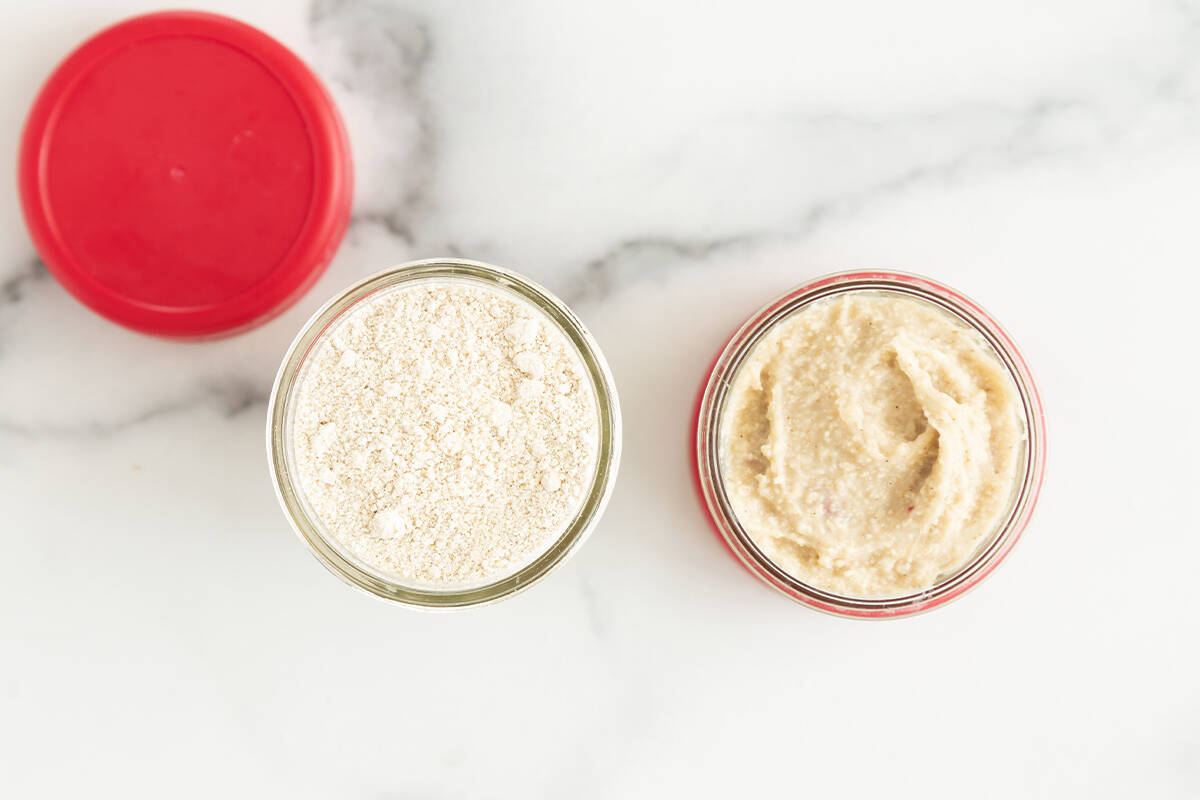
Best Store-Bought Baby Oatmeal
I love the Amara Organics Oats n’ Berries (paid affiliate link). It has a delicious berry flavor and 50% less sugar than other similar products, and it mixes up so fast that it’s a nice option to have on hand for fast meals for baby.
How to Store Leftover Baby Oatmeal
To store any leftovers, simply place into a small baby food storage container and store in the fridge for up to 3 days. Add a little hot water to thin out (it will thicken in the fridge) and serve.
(Learn more about storing baby food.)
Frequently Asked Questions
Best Tips for Success
- Store leftovers in a small airtight container for up to 3 days in the fridge. Thin and warm with hot water to serve.
- You can use breastmilk or formula instead of the water if you prefer. As baby grows, you can use plain unsweetened nondairy milk, then cow’s milk over age 1.
- Add more liquid to thin to desired consistency depending on baby—thinner for newer eaters and a little thicker as they become more comfortable with texture.
- To make organic baby oatmeal, start with certified organic rolled oats.
- To make gluten-free baby oatmeal, start with gluten-free rolled oats.
- To make different grains like rice, millet, and quinoa into baby cereal, grind in a high-powered blender—I love my refurbished Vitamix—and add liquid as directed in this recipe.
- I have multigrain baby cereal recipes for Quinoa Baby Cereal and Baby Rice Cereal that you may enjoy.
Related Recipes
Baby Food
Best Baby Food Combinations
Baby Food
10 Easy Homemade Baby Food Ideas
Baby Food
Master List of Baby Snacks
Baby Food
Quinoa for Babies (Quinoa Baby Food)
If you make this recipe for your kids, I’d love to hear so please comment and rate below.
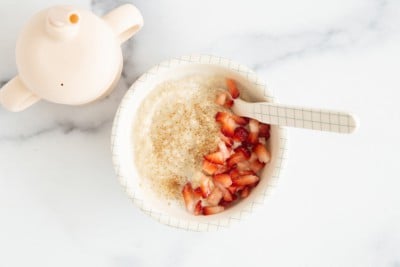
Easiest Baby Oatmeal
Ingredients
- 1 cup old-fashioned rolled oats
- 2 tablespoon water, breastmilk, or formula
- Cinnamon, ground ginger, or baby food purees (optional; see Notes for more)
Instructions
- Add the oats to a blender. Secure the lid and grind, starting on low and working up to high, until the oats form a flour-like powder.
- Add 1 tablespoon of the oat powder to a heat-safe bowl. Stir in about 2 tablespoons very hot water (or warm breastmilk or formula), adding more as needed to thin to desired consistency. (Start thinner, so the mixture is easy for baby to move around in their mouths—it should not be sticky for new eaters. You can gradually use less liquid as baby becomes more comfortable with solids.)
- Add any optional flavorings. Serve with a spoon or offer a preloaded spoon to baby to feed themself, stopping the meal when they turn their head or close their mouth.
- Store the remaining ground-up oats in an airtight container.
Notes
- Store leftovers in a small airtight container for up to 3 days in the fridge. Thin and warm with hot water to serve. Store any dry oatmeal in an airtight container in the pantry for up to 6 months.
- The initial portion on this recipe is small to avoid potential waste, so increase it according to the hunger of your child. Their appetite is your best guide for how much is the right amount for them to eat. Find our favorite options for adding yummy flavor to this baby oatmeal, too.
- You can use breastmilk or formula instead of the water if you prefer. As baby grows, you can use plain unsweetened nondairy milk, then cow’s milk over age 1.
- Add more liquid to thin to desired consistency depending on baby—thinner for newer eaters and a little thicker as they become more comfortable with texture.
- Organic baby oatmeal: Start with certified organic rolled oats.
- Gluten-free baby oatmeal: Start with gluten-free rolled oats.
- To make different grains like rice, millet, and quinoa into baby cereal, grind in a high-powered blender—I love my refurbished Vitamix—and add liquid as directed in this recipe.
- To add flavor and nutrients, stir in a spoonful of Banana Puree, Peach Puree, Mango Puree, Avocado Puree, Peanut Butter Puree, Pureed Sweet Potato, Pureed Butternut Squash, Applesauce, and/or Ground flaxseed
Nutrition
This post was first published June 2020.
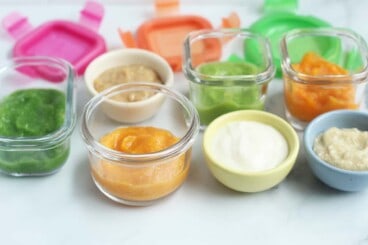
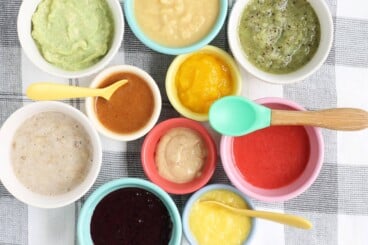
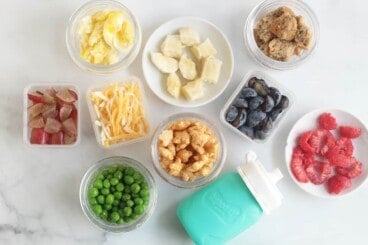
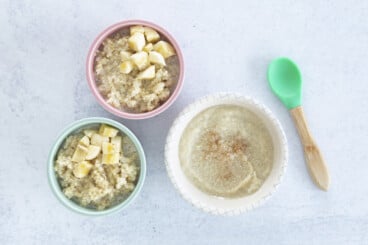


















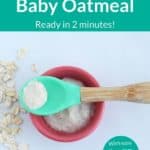
The ingredient list and instructions don’t match. The ingredients says 1 cup of oats and the instructions says 1 Tablespoon.
You make the ground up oats, then you use a smaller amount to make each serving. You can’t blend up 1 tablespoon at a time, so you need to start with the larger amount and simply store it to use as you need it. I hope that helps.
Can I use cold breastmilk?
Does it have to be warm?
When I add the water, the oatmeal is a bit sticky vs the store bought stuff. Any reason why this is?
Store bought baby oatmeal is processed differently. Maybe you just could add a little more liquid?
Hi! I like the idea of adding purées to the oatmeal. My daughter is 9 months old and she is a very picky eater. Oatmeal seems to be the only thing she really likes. She can tolerate butternut squash and yams but she hates all fruit so far.
I was wondering how much purée you add to the oatmeal? Also, do you have any other tips on how to make fruit and veggie purées tastier? I haven’t added any spices to her food and I’m not sure when I can add them since I know the Dr. said to introduce one food at a time.
Thanks for you help and thanks for sharing your recipes! 🙂
Hi- For about 1/4 cup oatmeal, I’d do 1-2 tablespoons of the fruit puree. You could add cinnamon to any flavor and then for savory foods, you can add things like ginger, cumin, italian seasoning, oregano—whatever you like. There’s not really an allergy concern with spices so you have a lot of options as long as you avoid hot spice. I hope that helps a little!
Hi, thanks so much for the recipe. I just wanted to clarify I am sing quaker oats large flakes oats. I grind them up like you said and wanted to verify that I don’t have to cook them before giving to them to the baby that I can just add hot formula to them. Thanks in advance
When the oats are ground into a fine powder, they cook almost instantly with hot liquid. I hope that helps!
Thanks for the clarity! I was going crazy wondering how to cook the oatmeal.
Thank you so much for this tip. I want to know if i have to add cinnamon powder to either the rice or oat, should i add it to the powdered content before adding formula or water? Also, what portion of cinnamon is advised?
You can stir it in as you add the liquid. A tiny pinch, like a 1/8 teaspoon at most would be a good place to start.
Thanks for the tips! I use the instant oatmeal and add milk. Should I be blending it first? Does blending help with digestion? Thank you
Instant oatmeal should be okay if it’s been working for you! They’re similar.
How long do the blended oats stay fresh for if I make a bunch in advance and store in a plastic container?
I mean without adding water, just the powdered oats!
6-12 months if the container is tightly sealed!
Hello! Your directions state to just add water or warm breastmilk to the oats- do you not have to cook these? Could you properly cook them on the stove? Or is that not needed? Just wondering because the current beachnut oats baby brand I am using states the oats are already cooked, so I wasn’t sure if that was a needed step to make the oats “safe” for baby? Thank you!
When the oats are ground into a powder, they cook almost instantly in the warm liquid.
Would this recipe work with any puréed fruit/veggie? My little guy likes a variety of mixed fruits and veggies. Thanks!
Yes it should, though I’d avoid veggies with strong or bitter flavors unless you know your kiddo likes them. Have fun trying out other options!
Can I freeze the oatmeal? If I make it over the stove and add the squash and coconut milk, would it be good to freeze?
I’d probably freeze it without the milk just in case it separates when you thaw it, but it should be okay otherwise.
Very yummy idea! My little man loves steel cut oats for breakfast, and I always try to add in something “extra” like a fruit or even pumpkin! I make my steel cut oats overnight in the crock pot – definitely adding pureed butternut squash next time!
I have an oatmeal lover too and I love the thought of doing this idea with steel cut oats!